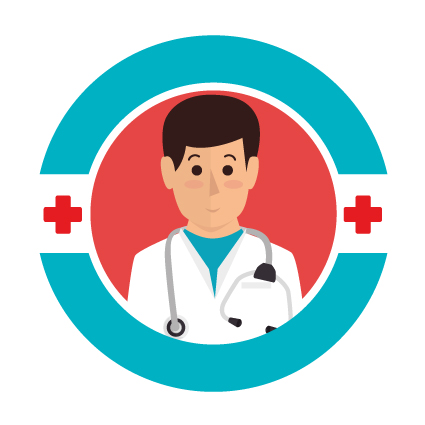
By Bonnie O’Neil
The fall chill in the air deepens as the leaves begin their inevitable eruption into glorious color. Children squeal with delight at the prospect of being frightened by houses decked out with ghosts, witches on broomsticks, and ghoulish creatures. This is October, the month when a little Halloween fear can actually be fun.
But, for most of us, fear is not a matter of child’s play. We can’t easily tuck away our fears like so many Halloween decorations, simply exchanging them for thoughts of thanksgiving because the calendar says we should.
When my son was diagnosed with type 1 diabetes at age five, I thought my greatest fear in managing his type 1 diabetes (T1D) would be injecting him with insulin. I would soon discover there were far greater fears awaiting me as his caregiver.
“What if his blood sugar drops precipitously low while I’m sleeping?”
“What if I can’t control his ketones and blood sugars when he has a stomach virus?”
“What if I don’t manage his blood sugars tightly enough when he’s young? What does that mean for his long-term health?”
These are the fears shared by every T1D parent within our collective community when the world is moving in its proper orbit. But these are not normal days and the world seems to be spinning in ways that leave us feeling particularly out of control. Living with the restrictions of the pandemic for eight long months now, our fears have taken on an additional dimension.
“How can I keep my child safe from getting COVID?”
“What if my child gets COVID? What will that mean for him?”
“When will it be safe for my child to resume her normal activities like school, work, and play?”
I know fear all too well. Despising the consequences of yielding to fear, I nevertheless fall prey to its temptations and cling to it as I would a best friend. I carry fear with me as a fire between my temples, a tornado deep in my gut. Awash with fear, it’s easy to descend from the present into an imagined world of what-ifs.
Fear is a cloaked villain, lurking in the shadowlands of our minds. Catching us by surprise, fear for our child’s safety can overwhelm our thoughts, locking us in repeating mental loops. Once that unseen villain kidnaps our thoughts, how do we escape his suffocating stranglehold? Next time the fear villain shows up unbidden, try these steps to send him packing.
1. Acknowledge Your Fear in Managing Your Child’s T1D
So often we feel the emotion without taking the time to name it. We hope by ignoring it, it will go away, when actually, the opposite is true. The more we ignore fear, the greater influence it has over us. Instead of ignoring fear, face it. Sit with it. Name its source by identifying the roots of your fear. You may be surprised to discover you’ve carried this same type of fear for a long time, even before your child’s diagnosis. Talk about your fears with a trusted friend, a therapist, or a counselor.
2. Lean on Meditation or Prayer When Fear Rises up and Feels Beyond Your Control
When we’re deeply afraid, we naturally experience an accelerated heart rate because our body’s sympathetic nervous system activates its natural defensive mechanisms. Once put into motion, we experience increased pulse and breathing rates, elevated blood pressure, and tensed muscles. Intentionally breathing slowly and deeply activates the parasympathetic nervous system, calming the body by decreasing blood pressure, heart and breathing rates, and relaxing tense muscles. Deep breathing exercises associated with meditation and the slow breath prayers practiced in many faith traditions help calm our body when fear surges.
3. Stay Present
We fear what we suspect might happen in the future. When we stay grounded in the present, it’s harder for our thoughts to slip away into uncharted territory. Practicing centering prayer or mindfulness helps us grow in our ability to stay present and teaches us how to reel our thoughts back in if they begin to stray too far into what-if scenarios. When fear overwhelms you, take some time to focus on the present by repeating the word or phrase you use in mindfulness or centering prayer. Repeated slowly, in the rhythm of a deep in-breath followed by a deep out-breath, our heart rates slow, our minds settle, and we stay grounded in the present.
4. Practice Letting Go of Perfection
No one gets everything “right.” Making any decision involves trade-offs. You have an awesome responsibility in caring for your child’s chronic illness, but you can’t determine and control all outcomes affecting her. Some of us naturally have a higher desire for control than others do. If that’s you, remind yourself frequently that you’re doing the best you can, but ultimately, you’re not in control of all things. Releasing control is not a weakness; it could become your greatest strength. Give yourself permission to release control and then visualize yourself letting go.
And when fear rises up in the middle of the night, take a few deep breaths and allow your centering word to carry you back to the present, away from the fear.
Post Views: 3
Related Post
 02
02 Dec
Does Ambetter Cover Virtual Mental Health Visits in Georgia?
Does Ambetter Cover Virtual Mental Health Visits in Georgia? Ambetter from the Peach State Wellbeing Plan serves underprotected and uninsured populations through Georgia Access. Ambetter from Peach State Wellbeing Plan is endorsed by Ambetter of Peach State, Inc., which is a.
Read More 18
18 Nov
Is There a Good Place to Stop Leveling Health Skyrim?
The blemish in Skyrim's evening out framework is by they way it grants capacity to the player, and capacity to the players resistance through unequivocal means. For instance, by work in abilities. Is there a good place to stop leveling health.
Read More 06
06 Nov
What Type of Cancer Did Morgan Spurlock Have?
Morgan Spurlock, the producer and previous CNN series have whose McDonald's narrative Super Size Me was selected for an Institute Grant, passed on from disease confusions Thursday, as indicated by his loved ones. What Type of Cancer Did Morgan Spurlock Have? The.
Read More 24
24 Oct
When Does Nutex health Inc Do Earnings Report Come Out?
When Does Nutex health Inc Do Earnings Report Come Out? Today announced that Nutex Health Inc., Nutex Health" or the "Company," a physician-led, integrated healthcare delivery system comprising of 21 state-of- the-art micro hospitals in 9 states and primary care-centric. The.
Read More